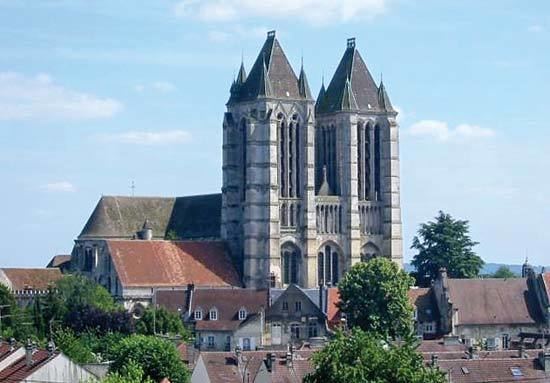Intercommunality Pays Noyonnais Area 18 km² Local time Monday 9:12 PM | Canton Noyon Time zone CET (UTC+1) Population 14,240 (2007) | |
 | ||
Weather 11°C, Wind SW at 24 km/h, 74% Humidity Points of interest Noyon Cathedral, Musée du Noyonnais, Musée Calvin | ||
Noyon (Latin: Noviomagus Veromanduorum, Noviomagus of the Veromandui) is a commune in the Oise department in northern France. It lies on the Oise Canal about 100 kilometers (60 mi) north of Paris.
Contents
Map of 60400 Noyon, France
History
The Gallo-Romans founded the town as Noviomagus (Celtic for "New Field" or "Market"). As several other cities shared the name, it was distinguished by specifying the people living in and around it. The town is mentioned in the Antonine Itinerary as being 27 Roman miles from Soissons and 34 Roman miles from Amiens, but d'Anville noted that the distance must be in error, Amiens being further and Soisson closer than indicated.
By the Middle Ages, the town's Latin name had mutated to Noviomum. The town was strongly fortified; some sections of the Roman walls still remained in late antiquity. This may explain why, around the year 531, bishop Medardus moved his seat from Vermand in the Vermandois to Noyon. (Another option was to move his seat to Saint-Quentin but the wine produced in Noyon was thought to be much better than that produced in Saint-Quentin. Other explanations are that Medardus was born near the town, at Salency, or that the place is nearer to Soissons, which was one of the royal capitals of the Merovingians.) The bishop of Noyon was also bishop of Tournai from the seventh century until Tournai was raised to a separate diocese 1146.
The cathedral at Noyon was where Charlemagne was crowned as co-King of the Franks in 768, as was the first Capetian king, Hugh Capet in 987. In 859 the town was attacked by Vikings and the bishop, Immo, captured and killed. The town received a communal charter in 1108, which was later confirmed by Philip Augustus in 1223. In the twelfth century, the diocese of Noyon was raised to an ecclesiastical duchy in the peerage of France. The Romanesque cathedral was destroyed by fire in 1131, but soon replaced by the present cathedral, Notre-Dame de Noyon, constructed between 1145 and 1235, one of the earliest examples of Gothic architecture in France. The bishop's library is a historic example of half-timbered construction.
By the Treaty of Noyon, signed on the 13 August 1516 between Francis I of France and emperor Charles V, France abandoned its claims to the Kingdom of Naples and received the Duchy of Milan in recompense. The treaty brought the War of the League of Cambrai— one stage of the Italian Wars— to a close.
During King Henry II's Italian war in 1557, most of Noyon would be burned, in the midst of Philip II of Spain's invasion of Picardy, before returning to their winter quarters in the Spanish Netherlands.
Near the end of the sixteenth century the town fell under Habsburg control, but Henry IV of France recaptured it. The Concordat of 1801 suppressed its bishopric. The town was occupied by the Germans during World War I and World War II and on both occasions suffered heavy damage.
Personalities
International relations
Noyon is twinned with:
